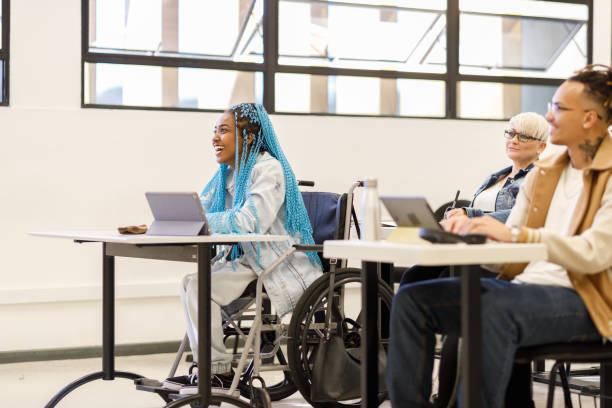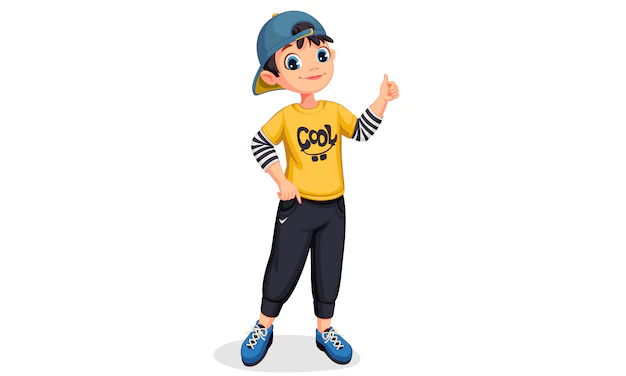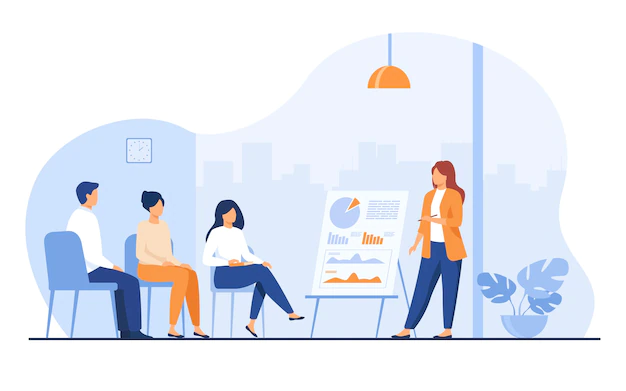Inclusive Learning Program: Secrets To Why You Need Microlearning

Inclusive learning program? What are they and why are the significant? We have the answer right here.
As microlearning becomes more popular, more people are getting interested in it. This technique helps to make information easier to understand and remember, leading to better learning results.
It also has the potential to be used more commonly than traditional learning methods.
In this article, we will discuss why microlearning helps everyone feel included and how you can use it in your learning program that includes everyone.
Read: The Power Of Generative AI In The eLearning Industry
Definition of Inclusive Education
Inclusive education means that all students, no matter their abilities, backgrounds, or needs, are taught together in the same classroom or educational setting.
The goal is to make sure that every student has fair chances to join in, learn, and do well, no matter what makes them different or if they have disabilities.
The aim is to make a place where everyone is accepted no matter their differences, and to help each student succeed to the best of their abilities.
Definition of Microlearning
Microlearning is a new and helpful way of learning that makes complex things easier. It does this by breaking them into small and easy-to-understand parts. Each part takes just a few minutes to learn.
This method uses different types of digital content like videos, quizzes, pictures with information, or short written material to get learners interested and involved. These short lessons help people quickly learn and remember specific things they need to know or do.
Microlearning uses techniques from psychology to help people remember and understand information better. It does this by spacing out practice sessions and asking learners to actively think about and recall what they’ve learned.
It encourages people to have short conversations with learning materials often. You can use smartphones, tablets, or computers to access the materials.
This makes it easy for people to use and fits with their schedules and preferences.
Also, microlearning can easily be included in corporate training programs, educational courses, or informal learning settings.
This allows organizations and individuals to keep up with the constantly changing information and remain competitive in the world.
This approach helps people learn on their own and gives them the ability to gradually gain new knowledge or skills, which leads to continuous improvement and flexibility.
Microlearning Inclusive: What Makes It So?
Accessibility
Microlearning content can be easily accessed whenever you want and is very flexible. Students can pick when and where they want to learn, so it fits with their personal preferences and schedule. This is extra important for people who are busy or have disabilities.
In simple terms, people who need help with accessibility can choose from many different options. For example, they can watch videos with words on the screen or listen to descriptions.
They can also read written versions of the text, see subtitles, or use pictures to understand. Most importantly, people with disabilities can easily use the microlearning content on their own devices, which are already set up to meet their specific needs.
Cost-Effective
Small and easy-to-make learning units can be created fast and easily, which helps lower the total cost of designing instructional materials. Additionally, it is also a cheaper option for people who study online.
This is because you can easily find it on social media platforms like videos, infographics, and articles. This allows people who can’t afford traditional learning programs to still have the opportunity to learn.
Personalization
Microlearning modules can be created to meet the specific requirements and interests of each learner. People can pick what they want to see, the thing they use to look at it, and the things they want to know about.
Because of this, they can gain knowledge using information that is important and applicable to them.
For instance, students with disabilities can find material that they can relate to, or that was created by people who have had similar experiences and backgrounds.
ZazzleThis makes a connection and encourages learners to feel more motivated during the learning process.
Bite-Sized Information
People who have trouble paying attention and learning may benefit from breaking information into smaller parts so they can understand it better.
In simpler words, when learning materials are easy to handle and not too overwhelming, people can concentrate better and not feel confused or stressed by too much information at once.
Finally, students who have trouble paying attention often feel more interested because microlearning material is made to be used in a short amount of time.
Inclusive Learning Program: How To Incorporate Microlearning In It
1. Design Microlearning Modules
Make sure the things you create are interesting to look at and keep people interested, while also giving them useful information and being easy for everyone to understand.
Training programs should have a clear focus on particular topics or goals that learners want to achieve. These programs should provide learners with the necessary information and skills required to reach these goals.
It is important that your content is current and meets the needs and interests of your learners. Microlearning can be given in different ways, such as through words, videos, audios, and interactive parts.
However, when you are picking a format, think about the preferences and accessibility of the people who are learning.
Finally, microlearning content must be engaging, allowing learners to use what they have learned and practice their abilities. This can include tests, evaluations, and real-life examples.
2. State Learning Audience And Objectives
Before you make your microlearning content, there are certain questions you should ask. What do you need to learn? What will you be learning about? When will you study this plan?
You also have to explain the knowledge, skills, and abilities you want learners to gain through microlearning and how your learning program can help achieve these goals. This will make sure that the modules are made to fit the exact needs of the learners.
Also, it’s important to think about the different backgrounds and experiences of the learners, as well as any possible obstacles that might affect their ability to participate with the material.
3. Appraise the Process
You should keep track of how well your program is working and make changes if needed to make learning better.
To check how well your microlearning program is working, you can ask your learners questions using surveys, talk to some of them in small groups, or have one-on-one conversations to get their feedback.
You can ask them if they like the program, if they are interested in the lessons, and if they think the program works well. You can make changes to improve the process by using their responses. This might mean you need to change the lessons or give more help to learners.
4. Convey The Modules
When creating microlearning lessons, it is important to make them accessible. This means making sure they can be used by different people and are compatible with helpful tools like screen readers.
You need to pick a platform to host them. It can be a system for learning, a phone application, or a platform for socializing online. Think about the problems with staying safe.
Also, you need to give them at different times that suit their availability and give them clear directions and rules for finishing them.
Lastly, it is important for you to keep an eye on and evaluate microlearning lessons to make sure that learners are achieving their aims and targets. This means giving feedback, checking how they are doing, and helping them if they need it.
Instances Of Inclusive Learning
Unconscious Bias
Unconscious bias can get in the way of making a workplace or school environment where everyone feels included. It can cause unfair treatment or fewer chances for certain groups.
A class about this subject could teach students about the issue and how it can affect choices and relationships at work.
Workplace Ethics
A learning program that includes everyone should also teach about being good and fair at work. It should teach about the rules for being good and how to use them in different situations.
You can give learners situations where they have to make tough choices and ask what they would do. This supports having a good and honest culture.
Cultural Competence
A short lesson on cultural competence can teach people how to work well with others from different backgrounds and make an environment where everyone feels welcome.
Some topics could explain the word “diversity,” help learners understand its different aspects, or discuss cultural awareness.
Inclusive Communication
It is necessary to teach learners about ways to communicate in a more inclusive manner. This means using polite words, not assuming things about people, and really paying attention to what others say.
Your learners will learn to understand and respect others’ feelings and cultures, which will help them build better relationships with colleagues from different backgrounds.
Accessibility And Inclusion
Pay attention to lessons that teach about accessibility and inclusion in the workplace or even in school. This could involve creating a welcoming environment for everyone, recognizing and accommodating different ways of learning, and using tools to help students with disabilities.
Teach Mental Health Awareness
Your learners should learn about mental health and common conditions like anxiety, depression, and PTSD.
The lessons should also teach about not judging or making others feel bad about having those conditions, and ways to help and be supportive to their friends who may have difficulties with their mental health.
It’s also important to remember to take care of yourself and find ways to manage stress.
Conclusion
Using microlearning in your inclusive learning program can help to make the learning experience better for everyone. It can make the learning more easy to understand, interesting, and successful.
If you follow these steps, you can create a nice learning environment where students feel comfortable to be themselves and succeed, regardless of their differences or skills.







